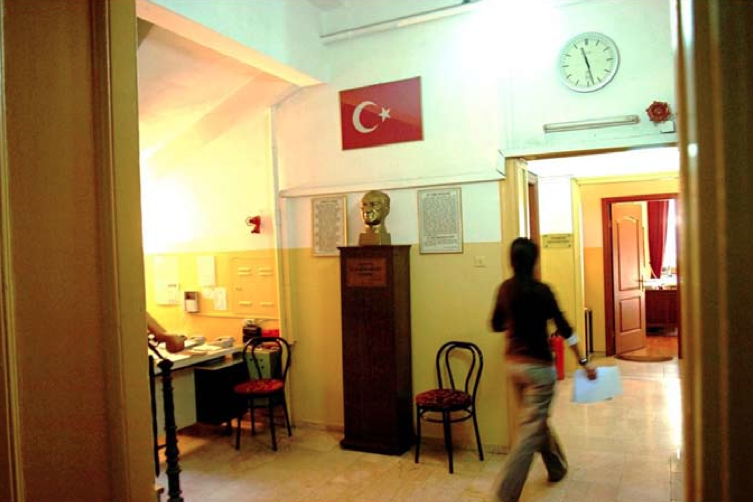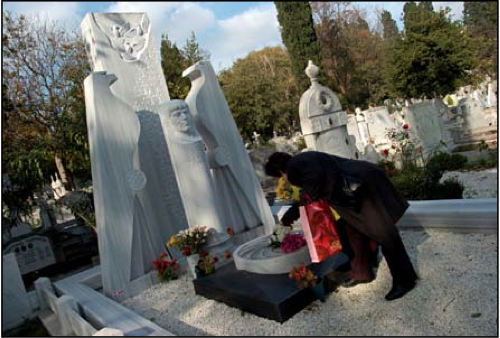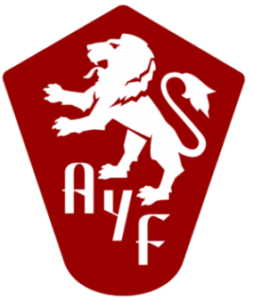Armenians in Turkey Today: An Overview

Statues of Ataturk and Turkish flags, required by Turkish law to be displayed in every room and corridor, are ubiquitous and adorn the walls of all the schools in Turkey, including the Getronagan (Central) Armenian school. photo credit: Clement Saccorrani
Currently, estimates place the number of Armenians in Turkey between 55,000 and 75,000. While most of them belong to the Armenian Apostolic church, a small portion of these Armenians are Catholic or Protestant. The Armenian community is concentrated in several districts in Istanbul including Bakirkoy, Sisli, Kurtulus, and Samatya.
During Ottoman times, Armenians who obeyed the law got by as long as they accepted a legal and social code that was different than that which was applied to their Muslim countrymen. However, harsher methods–such as outright killings and deportations–were employed as the empire neared its end, especially during the Hamidian and later transition years (the Young Turk era) towards the new republic.
Things changed following the creation of the Turkish Republic. One can say that the government followed a certain “path,” rather than the institutionalized segregation reminiscent of Ottoman times. In other words, the Ottoman-style discrimination became much more discreet, yet was nevertheless still prevalent. This newer “path” can be described as an accumulation of methods, such as: indirect intimidation of the minorities; arbitrary laws that create and support legal uncertainty; and policies that aim to create weariness among the Armenian population to pass on its religion, culture and language to the next generation.
In 1942, along with the other non-Muslim minorities, Armenians in Turkey were forced to pay a wealth tax which was arbitrarily imposed to bring about the impoverishment of non-Muslim segments of Turkish society. As an open example of the impetus behind such discriminatory measures, the then Prime Minister Sukru Saracoglu delivered a speech on August 5, 1942, where he described the Turkish administration’s program and stated that his nation is, “Turkish, pro-Turkish, and will always remain pro-Turkish. As much as being a blood matter, Turkishness is also a matter of conscience and culture. We want the authority of neither monarchy nor capitalism, nor the authority of classes. We only want the dominion of the Turkish nation.”

Slain journalist Hrant Dink's grave at Balikli Armenian Cemetery in Istanbul. photo credit: Clement Saccorrani
Later, in the mid-1950s, Armenians and Greeks in Istanbul became the victims of Turkish mobs, inflamed by the issue of Cyprus, which rioted through their communities destroying personal property churches and cemeteries with the indirect help of the military.
Today, although Armenians do have a legal minority status in Turkey, their religious leadership organs are not recognized in the same way. For instance, the Armenian Patriarchate continues to this day to seek legal recognition of its status as patriarchates rather than foundations. This particular problem prevents it from having the right to own and transfer property and train religious clergy.
Outright killings of Armenian civilians do not occur anymore, as far as we know; however, the intensive anti-Christian (or, more broadly, anti-foreign) propaganda by the media outlets–which are heavily influenced by the government–do result in attacks by nationalists on Armenian individuals, churches and cemeteries. This is especially true since the Armenian community represents the largest non-Muslim element in Turkey. Even though it may not be appropriate to blame the entire Turkish government for these attacks or for the recent murder of journalist Hrant Dink, powerful elements within the government are certainly responsible for them.
Furthermore, the Armenian community in Turkey faces the burden of often being blamed for the country’s image problems abroad. International Genocide recognition efforts create resentment and public anger towards the Armenian community. This active anger is fueled by active propaganda which results in the creation of a society where the average Armenian living in Turkey feels like a stranger–despite the fact that he or she is born in that country, and is supposed to be a part of the fabric of Turkish society.
It is worth mentioning here that Hrant Dink’s murder, along with other developments, created a slight ripple of change in public opinion in Turkey during recent years. More and more intellectuals have publicly recognized the Armenian Genocide. Furthermore, a group of intellectuals started an apology campaign. However, it is too early to say that the Turkish government or the people are ready to do what is right. Apology campaigns and seminars that shed light on the Armenian Question are not taken seriously by the authorities, and are resented by the vast majority of the general public.
The problem seems to be that the Turkish government is still extremely worried about the Armenian Question; even an insignificant minority population that has no right of association is recognized as a “potential threat to the national security” by this government. This fright leads the government to create an environment in which the average Armenian will feel so uncomfortable that eventually they will end up emigrating or losing their identity and assimilate.
The Genocide and the events that led up to it caused the disappearance of a significant portion of Armenian existence. In addition, after the World War I, the political, cultural and financial harassment led to the present situation of Armenians in Turkey. The Armenian community will not have much left to recover if Armenians abroad do not act to do something to protect their compatriots from this new way of oppression.


Leave a Reply
Want to join the discussion?Feel free to contribute!